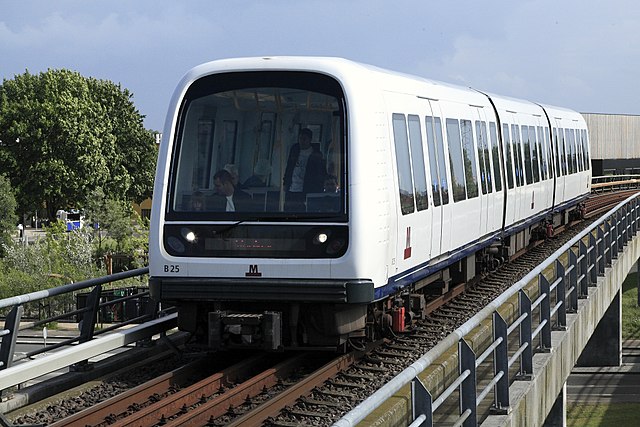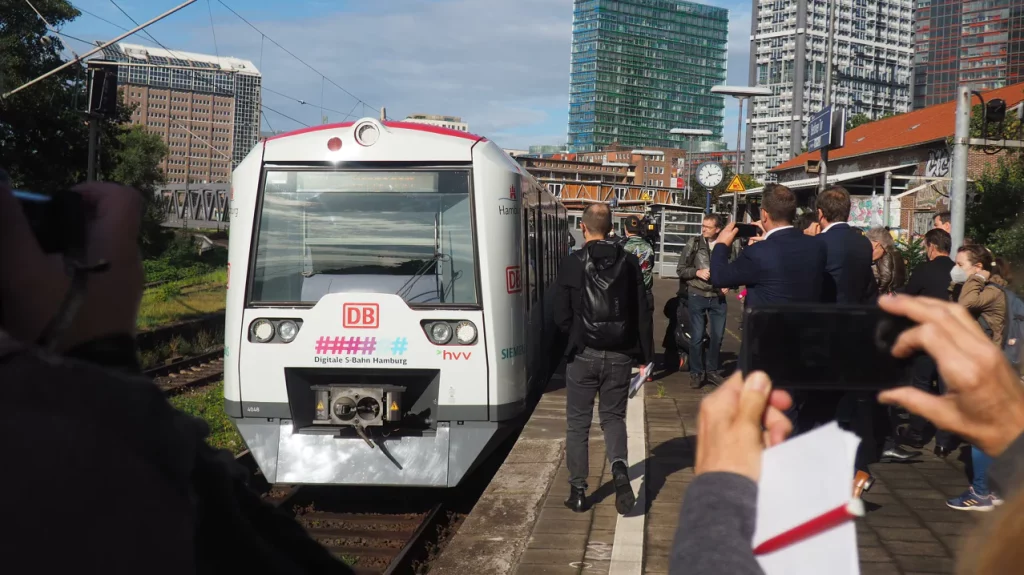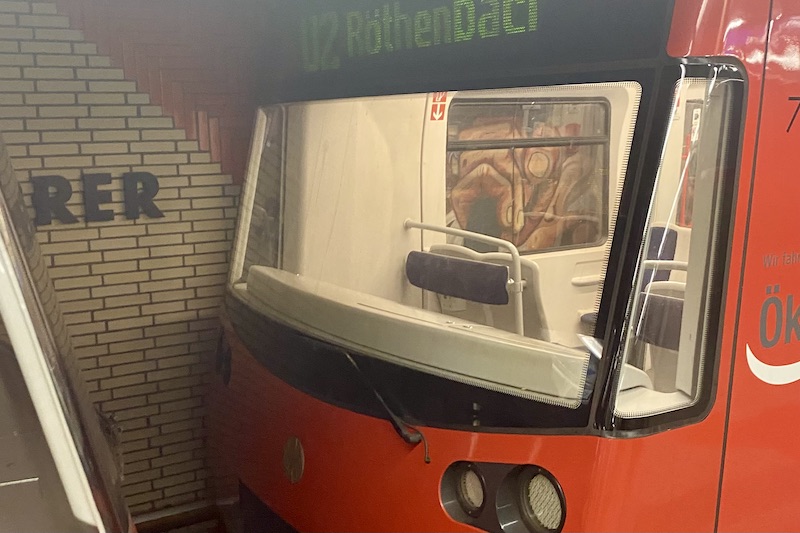On a recent visit to Nuremberg, Germany, I had the opportunity to ride a driverless train on the Nuremberg subway.
It is the only fully automated subway in Germany. And although the first automated subway line opened in 2008, not all lines are automated today. I asked myself: Why is it that fully automated subways are not more widespread, even though the technology has been around for more than 15 years?
Introduction
Driverless trains – or Automatic Train Operation (ATO) as the experts call it – is a technology that allows trains to operate without a conductor.
A computerized system takes over all of the driver’s tasks: Accelerating, braking, monitoring the track and the train’s doors.
In principle, it is easier to automate all these tasks for trains than for cars, because trains are guided by their tracks and therefore do not require steering.
And it should be even easier for subways, because they mostly run in tunnels, where there is less interference, controlled lighting, and relatively short networks.
For subway operators, automated train operation offers multiple benefits. Eliminating the human factor means faster response times, which allows trains to travel shorter distances. This increases the capacity of a line without the need for additional track or longer trains.
Automated trains do not get tired or distracted. This leads to very high punctuality (e.g. almost 99% in Copenhagen (Link)) and the possibility to operate a line 24 hours a day.
Another side effect of not having a driver on board is that the space taken up by the driver’s cab in conventional trains is freed up for passengers, who also enjoy the view into the tunnel.
A Global Perspective
As you can see, driverless trains have many advantages and should be highly desirable to operators. So why are we not seeing more of them?
During my research, I learned that my first impression from my visit to Nuremberg is wrong when you take a global perspective.
In recent years, a number of cities around the world have opened fully automated metro lines.
Copenhagen, the capital of Denmark, opened a completely new subway network in 2002, which was fully automated from the start.

Dubai followed in 2009, also a completely new system (Source: Railway-Technology.com (Link)).
And there are other cities that have upgraded some of their lines to fully automated operation, such as Paris with line 1 and Barcelona with lines 9 and 10.
These examples convinced me that automated subways are on the rise worldwide, and that we will see a lot more of them in the coming years.
But this does not explain my initial observations: Why are we not seeing even more widespread adoption of this technology?
One explanation I found in my research is the difference between greenfield and brownfield projects.
Brownfield Projects
Greenfield projects are situations where a metro system can be built from scratch, such as in Copenhagen or Dubai. This makes installation much easier: tunnels and stations can be designed with automation in mind. Space can be reserved for all the technology needed, such as sensors, antennas, servers and all the cabling to connect the different parts. Subway trains can be ordered with the right technology, and you can buy all the equipment from one manufacturer in one go, ensuring compatibility of all the parts.
Brownfield projects, on the other hand, operate in an existing environment. Operators have to work with what they have. The layout of the tunnels and stations is already set, the trains are there, and all the technology and signaling may be a mix of what you found before.
Nuremberg is a very interesting example of the challenges of brownfield projects.
When it opened its first fully automated line, the U3, it was a completely new line. So this line could be considered a greenfield project.
Upgrading the existing U2 line to FAO was an easy choice because it runs through the same tunnels as the U3 in most places.
However, the U1 was not upgraded at that time because the city of Nuremberg estimated that the benefits of this line did not justify the upfront investment (Source: VAG News 4/2012, page 2 (Link)).
In 2018, 10 years after the first automated line opened, the city revisited that decision. Ridership had increased significantly, and the city also wanted to attract more car drivers to the subway. A study estimated the investment to convert the U1 to automated operation at 100 million euros, which was too much for the city. There was also an unexpected problem: Since the first automated lines opened, automation technology had advanced so much that the original automation system was no longer available. (Source: Nordbayern.de (Link)).
Therefore, the city did not proceed with the upgrade.
Latest Developments
As this example shows, upgrading an existing infrastructure is much more complicated than building a new one.
But the situation is improving, as the city of Hamburg and Deutsche Bahn, together with Siemens, have shown.

The Hamburg S-Bahn has converted parts of its network to fully automated operation. Drivers are still on board, but only to operate on sections of track that do not yet support fully automated operation. With a recent upgrade of the trains’ software, the energy consumption of the trains could be reduced by 30% (Source: Heise.de (Link)).
The city of Hamburg plans to convert its entire network and train fleet to fully automated operation by 2030 (Source: Heise.de (Link)). Hamburg will be the first city with a fully automated S-Bahn network.
This system is designed to be future-proof, as it does not rely on a proprietary system. Instead, the new standard “ATO over ETCS” should ensure that other suppliers will be able to provide parts for the systems for many years to come (Source: Siemens (Link)).
Outlook
As I found out during my research, driverless subway trains are already in widespread use all over the world.
Cities that plan new subway networks are in the lead, as greenfield projects are much easier to implement.
Brownfield projects suffered from the need to be compatible with existing, proprietary systems.
Yet this problem is about to be solved, with the rise of standards that will break open the barriers of proprietary technology.
Still, the high investment costs will deter many municipalities from applying automation technologies, because the convention systems using drivers do not need these high investments. But today many cities suffer a sever shortage of trained drivers (Source: Heise.de (Link)), and this might give them the extra nudge needed to invest in driverless operations.
To me it seems that the era of automated trains, be it underground or in the open, is about to reach a new level.
